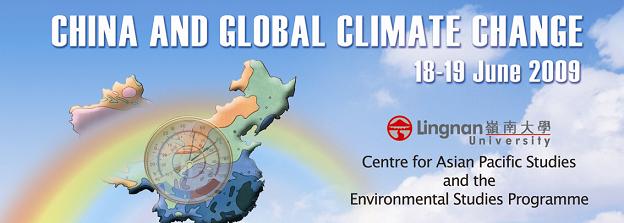
Event Title
Conference on China and Global Climate Change : Reconciling International Fairness and Protection of the Atmospheric Commons
Location
AM308, Lingnan University
Start Date
18-6-2009 11:00 AM
End Date
18-6-2009 12:30 PM
Language
English
Description
Short-lived greenhouse gases that also contribute to air pollution are playing a major role in global warming. Black carbon alone is likely the second or third most important climate forcing agent. The short atmospheric lifetime of these pollutants means that, unlike CO2, reducing emissions produces a decrease in atmospheric concentration and a reduction of the radiative forcing that drives climate change. Black carbon and tropospheric ozone also have large negative effects at the regional and local level contributing substantially to indoor and urban air pollution and the formation of Atmospheric Brown Clouds that disrupt regional climate. Moreover, technologies to reduce emissions are available, cost-effective, and have already been widely deployed in developed countries.
Reducing these short-lived greenhouse gases is therefore a mitigation pathway for industrializing countries that is both appropriate to their level of development and highly climatically effective. It is also consistent with both responsibility and capability fairness principles, both of which play important roles in the international climate regime. As such, it offers a way out of the current deadlock between developed and developing countries in which each group asks for more substantial emissions reduction commitments from the other before taking action. China, as the world’s largest black carbon emitter, should push for substantial CO2 mitigation commitments from the developed countries in return for aggressive action to reduce its own soot emissions. This action is consistent with China’s own development strategy and would contribute substantially to the mitigation of climate change.
Document Type
Discussion
Recommended Citation
Moore, F. C., & MacCracken, M. C. (2009). Mitigation of short-lived greenhouse gases as the foundation for a fair and effective climate compromise between China and the West. In China and global climate change: Proceedings of the conference held at Lingnan University, Hong Kong, 18-19 June 2009 (pp. 143-156). Centre for Asian Pacific Studies and the Environmental Studies Programme, Lingnan University, Hong Kong.
Included in
Mitigation of short-lived greenhouse gases as the foundation for a fair and effective climate compromise between China and the West
AM308, Lingnan University
Short-lived greenhouse gases that also contribute to air pollution are playing a major role in global warming. Black carbon alone is likely the second or third most important climate forcing agent. The short atmospheric lifetime of these pollutants means that, unlike CO2, reducing emissions produces a decrease in atmospheric concentration and a reduction of the radiative forcing that drives climate change. Black carbon and tropospheric ozone also have large negative effects at the regional and local level contributing substantially to indoor and urban air pollution and the formation of Atmospheric Brown Clouds that disrupt regional climate. Moreover, technologies to reduce emissions are available, cost-effective, and have already been widely deployed in developed countries.
Reducing these short-lived greenhouse gases is therefore a mitigation pathway for industrializing countries that is both appropriate to their level of development and highly climatically effective. It is also consistent with both responsibility and capability fairness principles, both of which play important roles in the international climate regime. As such, it offers a way out of the current deadlock between developed and developing countries in which each group asks for more substantial emissions reduction commitments from the other before taking action. China, as the world’s largest black carbon emitter, should push for substantial CO2 mitigation commitments from the developed countries in return for aggressive action to reduce its own soot emissions. This action is consistent with China’s own development strategy and would contribute substantially to the mitigation of climate change.

